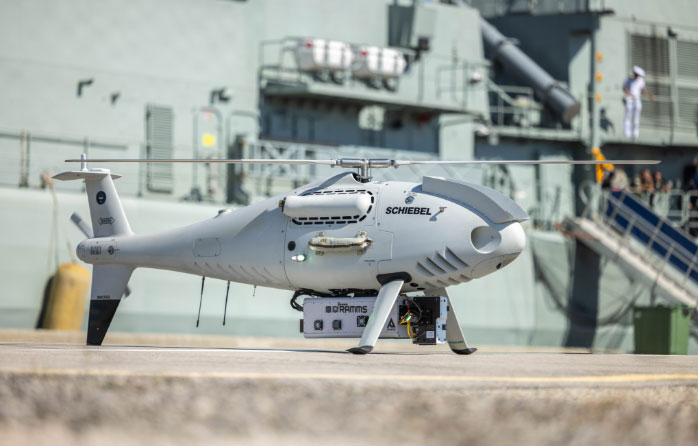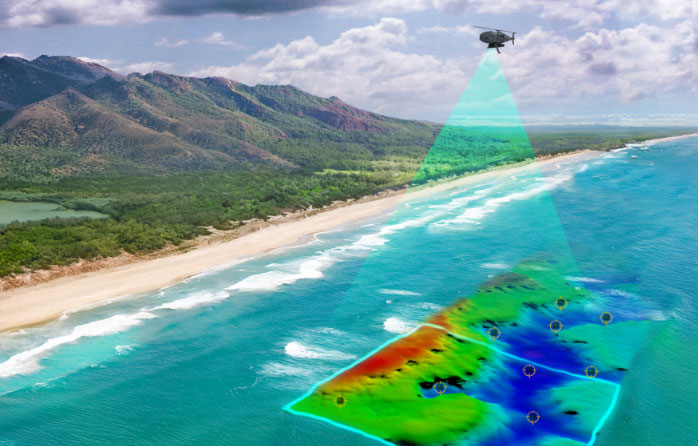

Mission systems
While the S-100 was principally built to carry big camera gimbals and perform ISR roles, Schiebel focuses on making the S-100 payload agnostic, and it has therefore integrated many sensors to many different ends without dictating to customers which mission systems should be installed (data processing and analytics in particular are customer-specific and left to the end-user to choose or tailor).
“We favour a few that we know are good; for instance, we’ve worked closely with L3 WESCAM in Canada over the years, and lots of our customers fly their 10 in MX-10 in the main undercarriage bay, but we’ve also integrated EO/IRs from, say, Trakka and Teledyne FLIR,” Hunter says.
“With 10 kg of payload capacity in the nose, around nine out of ten customers ask for a front-pointing Sony camera for the operator to use and step in if manual avoidance ever becomes necessary, but EO/IRs can also go in the nose. The UK Royal Navy S-100s, for instance, have an L3 WESCAM MX-8 gimbal there.
“We’ve also nose-mounted Overwatch Imaging’s PT- and TK-series sensors. The latter notably scans to surrounding horizons like a radar, but by using three different cameras of three different wavelengths and resolutions – they can do maritime surveillance, terrain analysing [and] wildfire analysing sensors – it’s quite a spread of capabilities they do.”
At least two radars have been flown, including Leonardo’s PicoSAR and Thales’ I-Master (the former being side-mounted and used by an Asian customer for maritime domain awareness, while the latter typically sits in the undercarriage of the UK Royal Navy’s S-100s). Both are SARs, and crucial for ground-moving target indication (GMTI), maritime moving target indication (MMTI) and target tracking through clouds during obscure weather conditions. Hunter adds that IMSAR’s SARs will soon be integrated for a couple of emerging contracts.
“On the entertainment side, we worked with the FLIR Systems Polytech Corona 350 II gimbal for a Hollywood customer 10 years ago, who wanted some very hi-res, high action cinematography. That was something of a one-off, but we still occasionally get asked about doing that sort of thing,” Hunter recalls.
Arguably, the fastest-growing market for the S-100 is anti-submarine warfare (ASW), driving r&d into how objects below the water surface can be detected and tracked from the air. To that end, the S-100 can be equipped with two 10 kg arrays of sonobuoys (totalling four) either side. RIEGL’s bathymetric Lidars have also been integrated and tested in shallow waters to great effect, potentially more for MCM than ASW.
Schiebel is also working with Thales France to integrate the latter’s ASW comms relay system. In that operation, a maritime patrol aircraft will drop a vast number of sonobuoys, while the S‑100 aerially relays data between them and to a mothership. Lastly, Schiebel is in talks with an unnamed American company (via the U.S. Navy) whose prototype sensor may be able to penetrate deeply below the waves for submarine hunting. “And while transponders aren’t payloads, we will install anything from Modes 1-to-5 and up to Mode S, based on customer requests, and we’ve moved into ADS-B wherever possible, because right now that’s the only real way to give yourself some conspicuity to crewed traffic or ATC.
There is still no real, standardised detect-and-avoid system for UAVs to comply with, as much as we expect it to come with time,” Hunter says.